Jean-Charles de Castelbajac, often referred to as JC/DC, is a visionary French fashion designer whose work has left an indelible mark on the fashion industry. Born in 1949, de Castelbajac’s career began in 1968 when he created his first piece using a school blanket. This inventive spirit has been a hallmark of his work ever since. Over the decades, he has become renowned for his avant-garde designs that blend pop culture, art, and fashion in a way that is both playful and profound. His creations have graced the bodies of celebrities like Madonna, Beyoncé, and Rihanna, and have been showcased in prestigious institutions such as New York’s Institute of Fashion and Technology and London’s Victoria & Albert Museum.
De Castelbajac’s fashion house, which he founded in 1978, became a platform for his bold, colorful designs that often incorporated cartoon imagery, a nod to the pop art movement that heavily influenced his work. His collaborations with artists like Keith Haring, Jean-Michel Basquiat, and Andy Warhol further cemented his place as a designer who seamlessly merges art with fashion. Beyond clothing, de Castelbajac has ventured into home furnishings, watches, and even large-scale public art, all of which bear his signature rainbow chromatic range—a celebration of color and creativity that transcends mediums.
Throughout his career, de Castelbajac has remained a true innovator, always pushing the boundaries of what fashion can be. Whether serving as artistic director for iconic brands like Max Mara and Benetton or creating unique collaborations with companies like Swatch and Palace Skateboards, his work continues to inspire and challenge the conventional norms of the fashion world. His legacy is one of endless creativity, where every piece tells a story and every design is a work of art.
FW13 JC DC Collection
How to tell if Jean-Charles de Castelbajac is vintage from the logo
Jean-Charles de Castelbajac is a brand known for its bold, avant-garde designs that blend art and fashion. The evolution of the Jean-Charles de Castelbajac logo reflects the brand’s creative journey over the years. Identifying whether a piece is vintage can be done by examining the details of the logo, as the brand has gone through significant changes in its visual identity. Below, we outline key logo changes across different eras to help you determine if your Jean-Charles de Castelbajac item is vintage.
1980s to 2000s Jean-Charles de Castelbajac logo
- This era features a more playful and artistic script-style logo.
- The logo often includes the full name “Jean-Charles de Castelbajac” written in a cursive, hand-drawn style.
- It sometimes incorporates additional details like a small symbol or icon, emphasizing the brand’s creative and artistic identity.
- The overall aesthetic of the logo is light, with a casual elegance that matches the eclectic nature of the brand’s designs during this period.
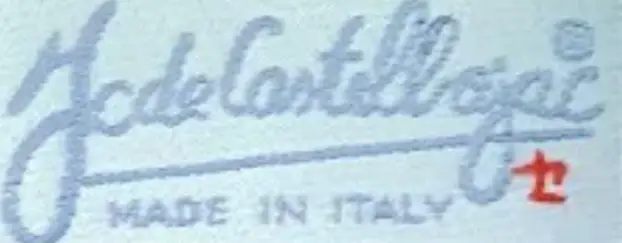
1980s to 2000s Jean-Charles de Castelbajac logo
1990s to 2000s Jean-Charles de Castelbajac logo
- During this period, the logo became more streamlined and modern.
- The brand name “CASTELBAJAC” is presented in bold, capital letters, with a strong, clean typeface that reflects a shift towards a more contemporary image.
- The design is minimalistic, focusing solely on the brand name without additional symbols or embellishments.
- This logo signifies a period where the brand aimed to establish a more defined and recognizable identity in the fashion world.

1990s to 2000s Jean-Charles de Castelbajac logo
How to tell if Jean-Charles de Castelbajac is vintage from the tags
Jean-Charles de Castelbajac’s fashion has always been characterized by its innovative and artistic designs, often blending pop culture references with high fashion. The evolution of the tags on his garments is a fascinating reflection of his brand’s journey through different decades. From the bold and vibrant designs of the 1970s to the more refined and varied tags in the 2000s, each era’s tag offers clues about the garment’s authenticity and age. Below is a guide to identifying the vintage era of Jean-Charles de Castelbajac clothing based on the tags.
Need assistance with vintage tags or labels? Upload a picture on our vintage tag identification page, and we’ll help you out!
1970s vintage Jean-Charles de Castelbajac tags
- Features the full name “Jean-Charles de Castelbajac” prominently.
- Tags are usually rectangular with bold serif fonts.
- Some tags include additional branding such as “KO and CO” or “Dessiné par Jean-Charles de Castelbajac.”
- The fabric tags tend to be simple in design, often with just the text and minimal decoration.
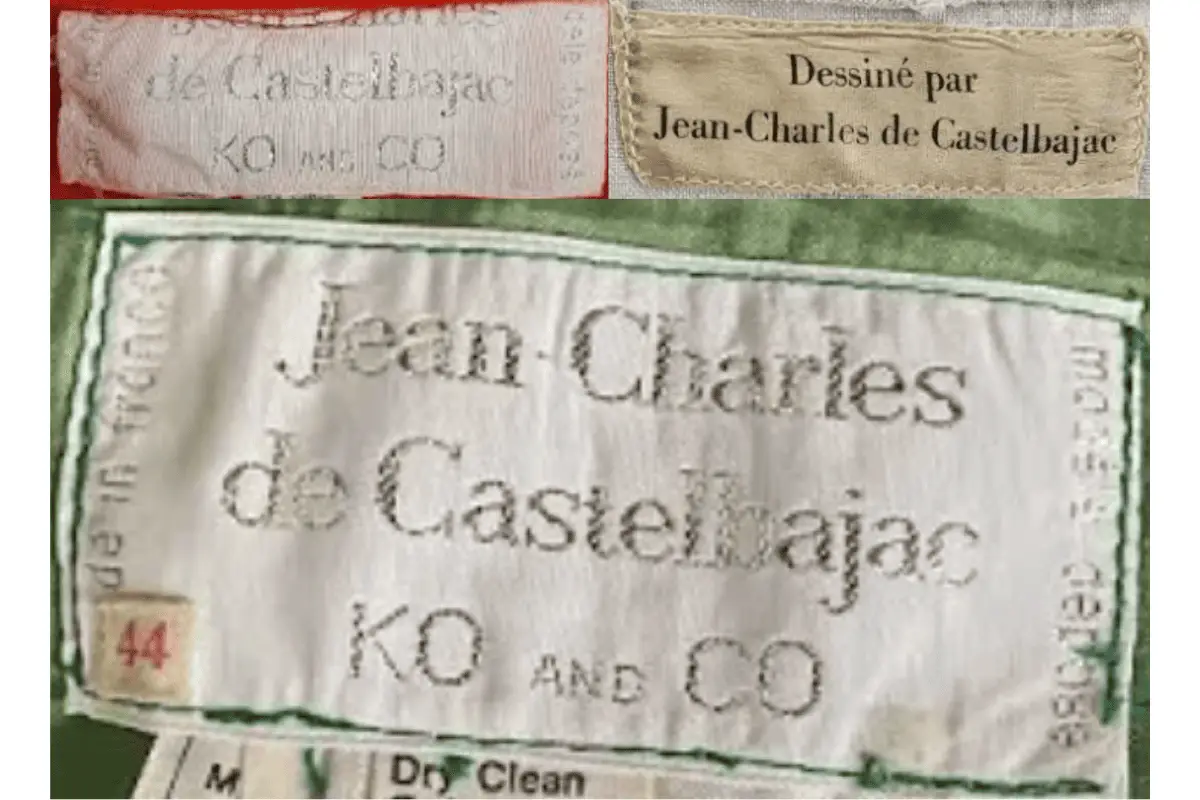
1970s Jean-Charles de Castelbajac tags
1980s vintage Jean-Charles de Castelbajac tags
- Introduction of the “J.C. de Castelbajac” abbreviation on some tags.
- Tags still prominently feature “Made in Italy” along with the brand name.
- Typography remains bold but starts to incorporate more script-like fonts, reflecting a blend of formal and casual aesthetics.
- Some tags include additional details like “Modèle Déposé” (Registered Design) to emphasize authenticity.
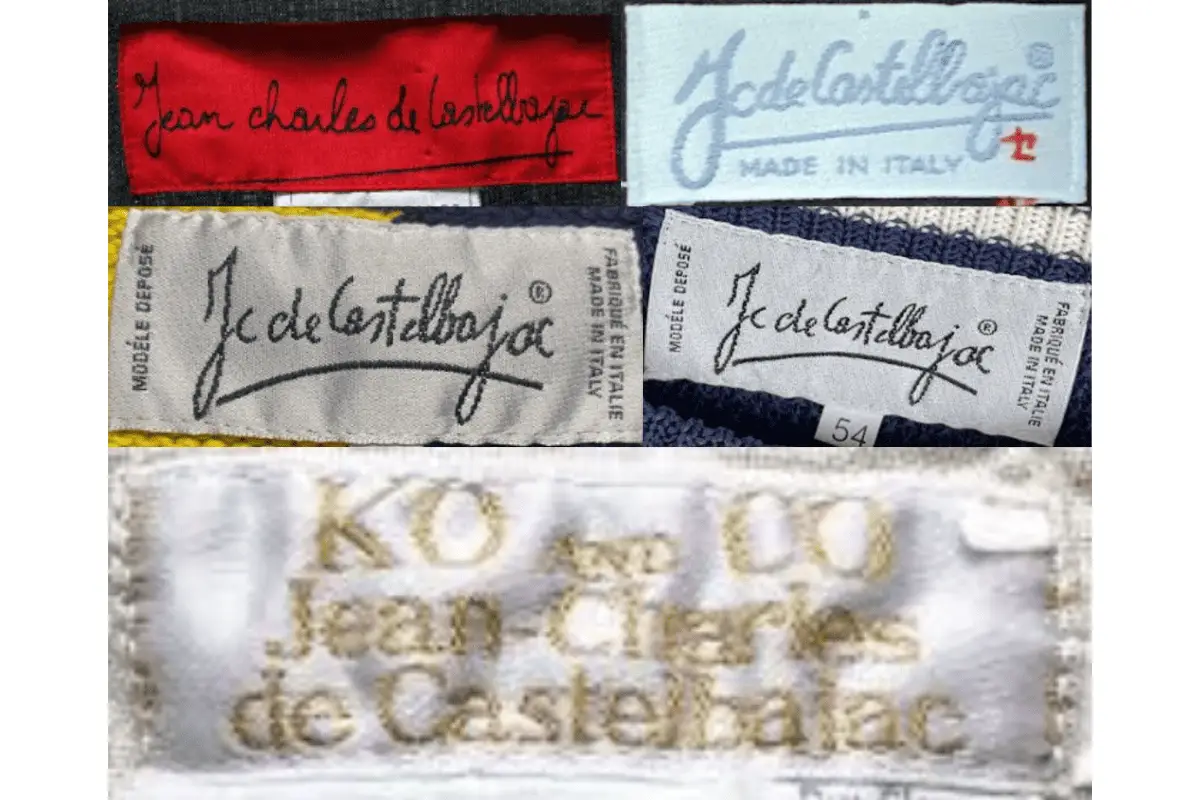
1980s Jean-Charles de Castelbajac tags
1990s vintage Jean-Charles de Castelbajac tags
- Tags often feature a cleaner, more streamlined design with less ornate fonts.
- The use of “J.C. de Castelbajac” continues, with variations in tag shapes from rectangular to smaller square tags.
- Consistent inclusion of “Made in Italy” to emphasize the quality and origin of the garments.
- Tags may be found in different materials, including softer fabrics, indicating a shift towards more modern production techniques.
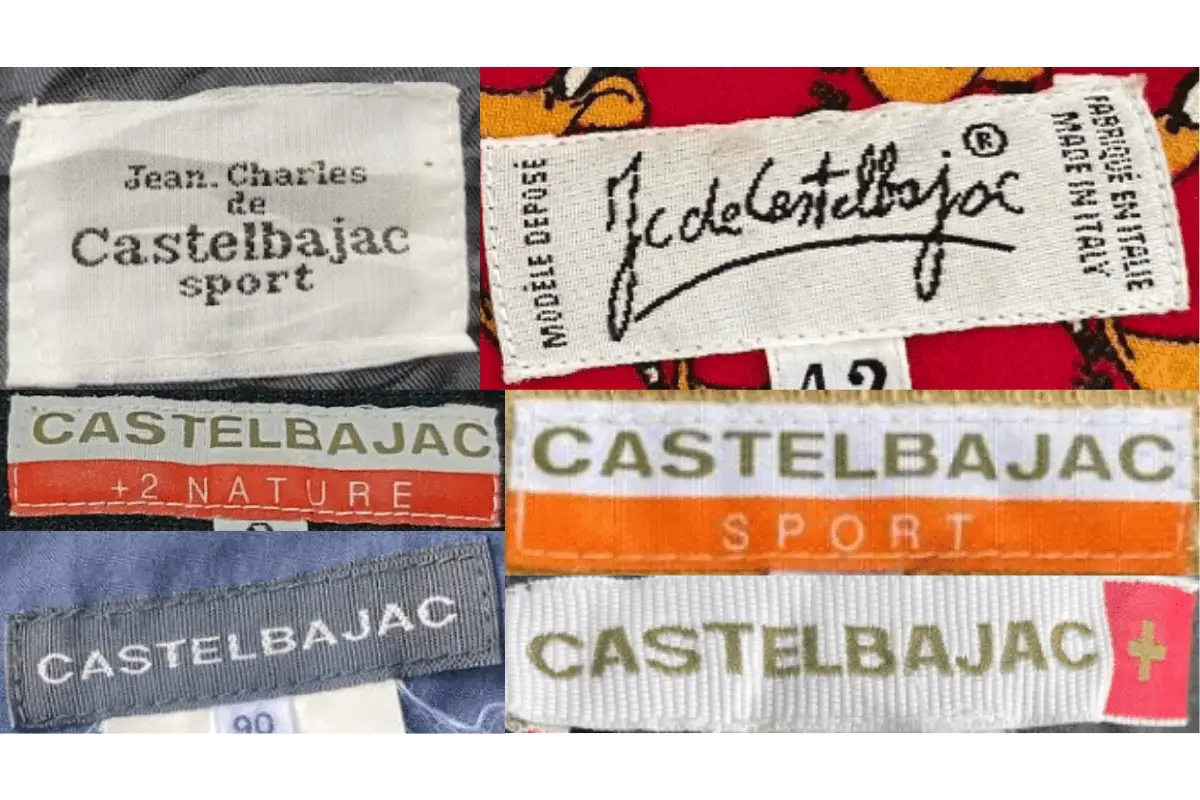
1990s Jean-Charles de Castelbajac tags
2000s vintage Jean-Charles de Castelbajac tags
- Introduction of more contemporary designs with varied colors and materials used for the tags.
- Tags may feature a combination of text and graphic elements, reflecting the brand’s continued embrace of artistic expression.
- The “J.C. de Castelbajac” logo remains central, often with additional text like size indicators or fabric care instructions on separate tags.
- Emphasis on the “Made in Italy” branding persists, reinforcing the luxury status of the garments.
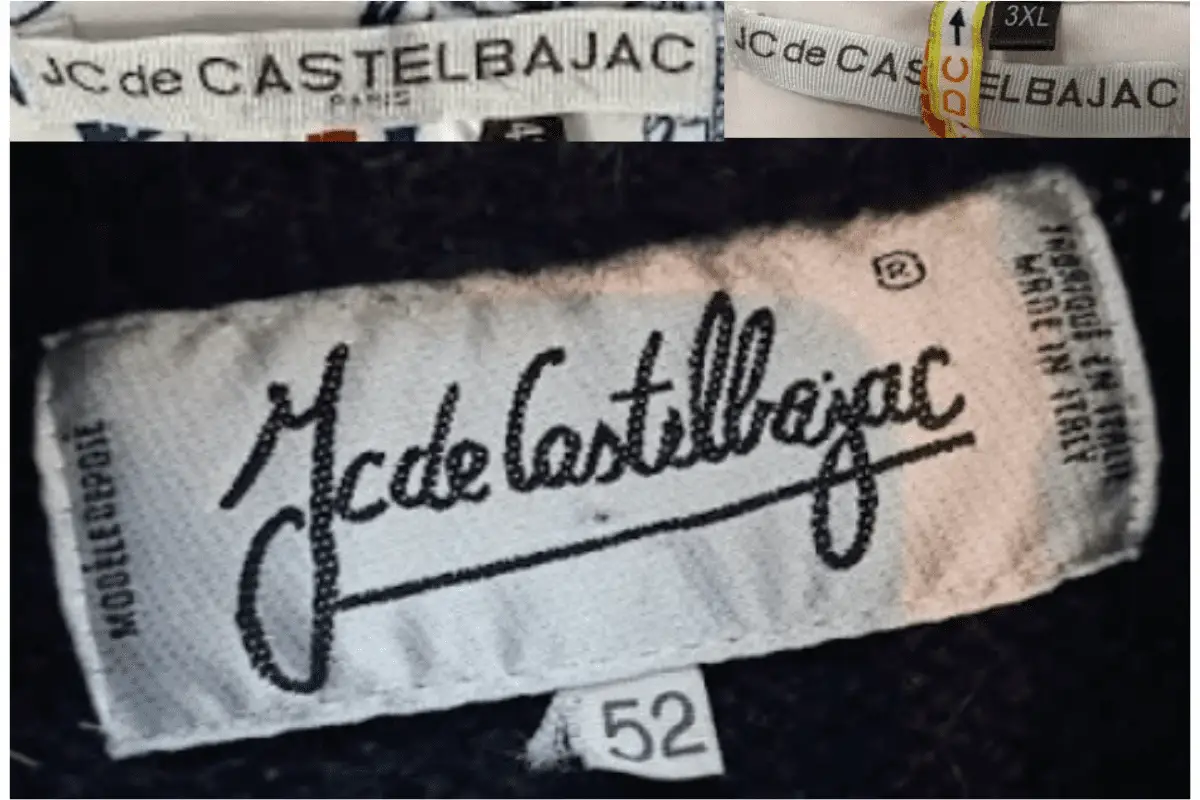
2000s Jean-Charles de Castelbajac tags
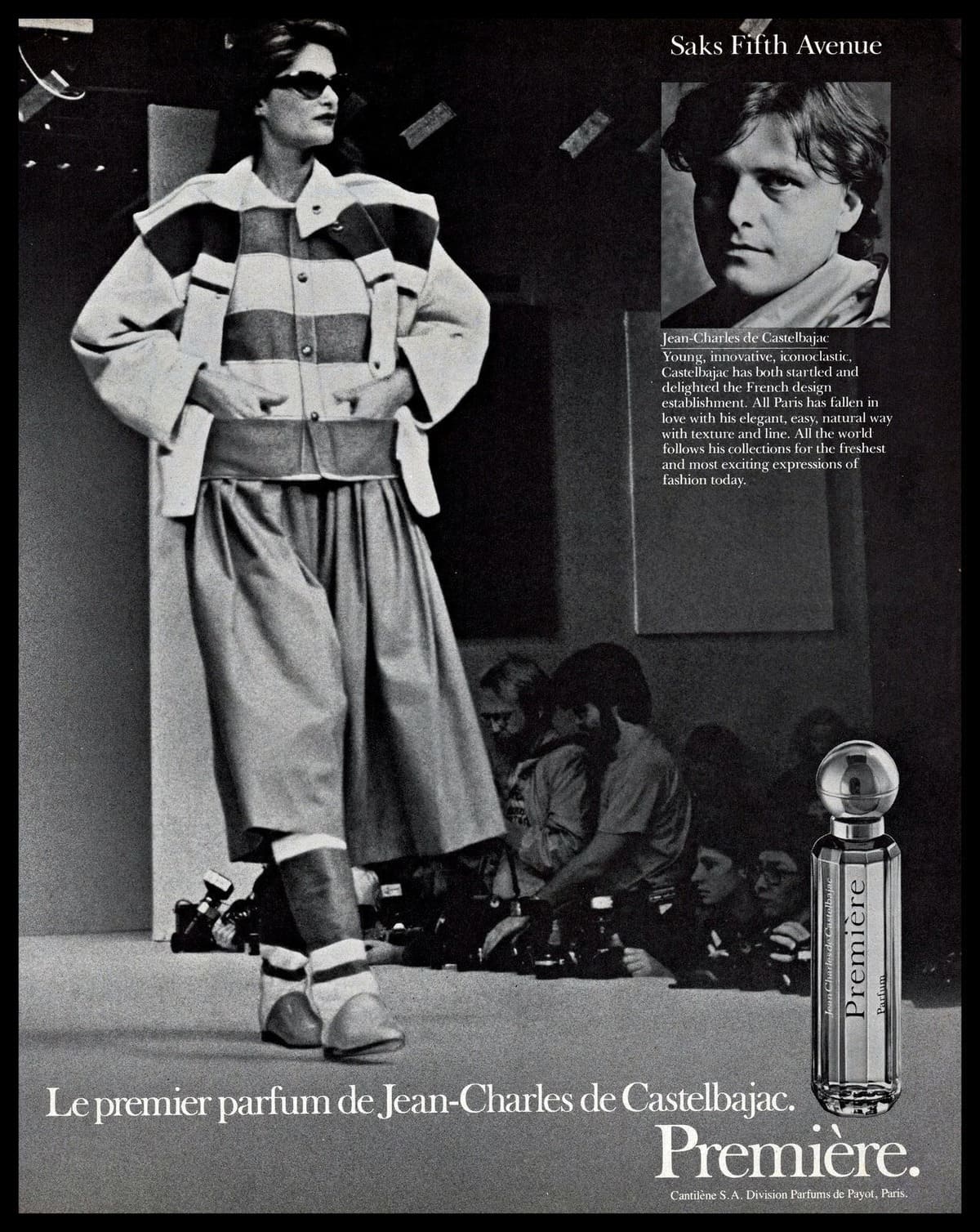

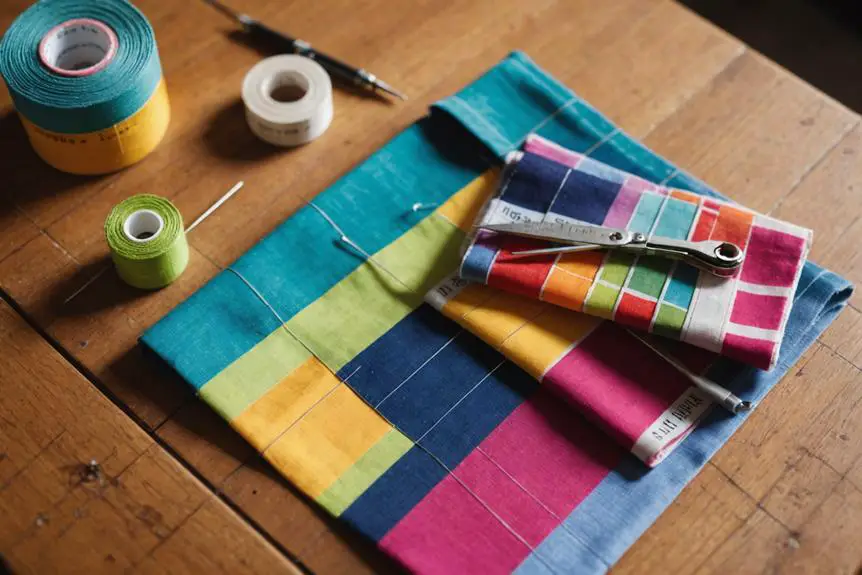


Thank you for your sharing. I am worried that I lack creative ideas. It is your article that makes me full of hope. Thank you. But, I have a question, can you help me?